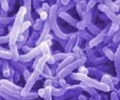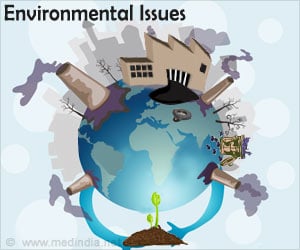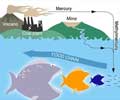- Groundwater can be contaminated with a great variety of harmful chemicals
- When this groundwater enters the domestic water supply and is used for drinking purposes, it poses a huge threat to human health
- Drinking water from domestic supplies can pose less risk to public health
- Birth defects
- Reproductive problems
- Increased risk of cancer
- Immune system disorders
- Nervous system disorders
Three presentations at this year’s Society for Risk Analysis (SRA) Annual Meeting, held in New Orleans, examined how contaminants present in wastewater, impact the environment as well as human health, with particular reference to the USA.
Read More..
What Did the Presentations Explore?
The following presentations were made at the 2018 SRA Annual Meeting:1. “Hormones and Pharmaceuticals in Groundwater Used as a Source of Drinking Water Across the United States” was presented by Laura M. Bexfield, MS, NM Tech, who is a hydrologist at the New Mexico Water Science Center under the US Geological Survey. Her study explored the findings of the National Water-Quality Assessment (NAWQA) Project of the US Geological Survey.
The study involved the analysis of groundwater samples from 1,091 sites across USA that were found to contain 21 hormones and 103 pharmaceutical substances. Importantly, the study stressed on the fact that the presence of these chemicals in groundwater, which is used for drinking purposes, is a major threat to human health.
Study Findings
- At least one hormone or pharmaceutical was present in untreated groundwater at six percent of 844 sites that provided public water supply.
- At least one hormone or pharmaceutical was present in untreated groundwater at 11 percent of 247 sites that provided domestic water supply.
Study Implications
Public health impact could be much lesser than for people consuming drinking water from domestic supplies.2. “PAH Contaminant Accumulation in Stormwater Catchment Basins: New Implications for Management Guidelines” was presented by Dr. Vinka Oyanedel-Craver, PhD, who is an Associate Professor in Civil and Environmental Engineering at the University of Rhode Island. Her co-presenters were Dr. Laura A. Schifman, PhD, an environmental hydrologist at Boston University and Dr. Varun K. Kasaraneni, PhD, an Assistant Professor in Environmental Science and Engineering at Gannon University.
PAH is the short form of polycyclic aromatic hydrocarbons, which are carcinogenic micro-pollutants that are highly resistant to environmental degradation. The study analyzed the concentrations of contaminants such as lead, zinc and chromium in five ponds along the I-95 corridor in Rhode Island, a US state in New England.
Study Findings
- Chemicals and drugs threaten the ecosystem by contaminating ponds and creeks.
- Contaminants collect in stormwater catchment basins (SCB) such as ponds, which are used for capturing pollutants present in stormwater.
Study Implications
Very high contaminant concentrations accumulate in the sediments and threaten the ecosystem of the ponds.3. “Method Development for Determination of Codeine, Fluoxetine and Acetaminophen in Brandywine Creek Watershed” was presented by Dr. Neha Sunger, PhD, who is an Assistant Professor in Environmental Engineering at West Chester University, USA.
The study analyzed the presence of contaminants, including drugs like codeine, fluoxetine, and paracetamol in the Brandywine Creek, which is a tributary of the Christina River in southeastern Pennsylvania and northern Delaware in the US.
Study Findings
Chemicals used for growing food crops, and medicines disposed into sinks or flushed down toilets, eventually drain into neighboring streams and rivers that become contaminated.Study Implications
The study method will help analyze even minute concentrations of chemicals that end up in water bodies like streams, rivers, ponds, and lakes.Therefore, it is best to avoid contaminated water for drinking purposes, as it can damage the endocrine system and lead to a host of other health problems. Consuming drinking water from domestic supplies can pose less risk to public health.
Reference:
- Is Our Nation’s Water Supply Disrupting the Human Endocrine System? - (http://www.sra.org/sites/default/files/pdf/press-release/Trace%20organics%20and%20legacy%20contaminants_FINAL.pdf)
Source-Medindia
















